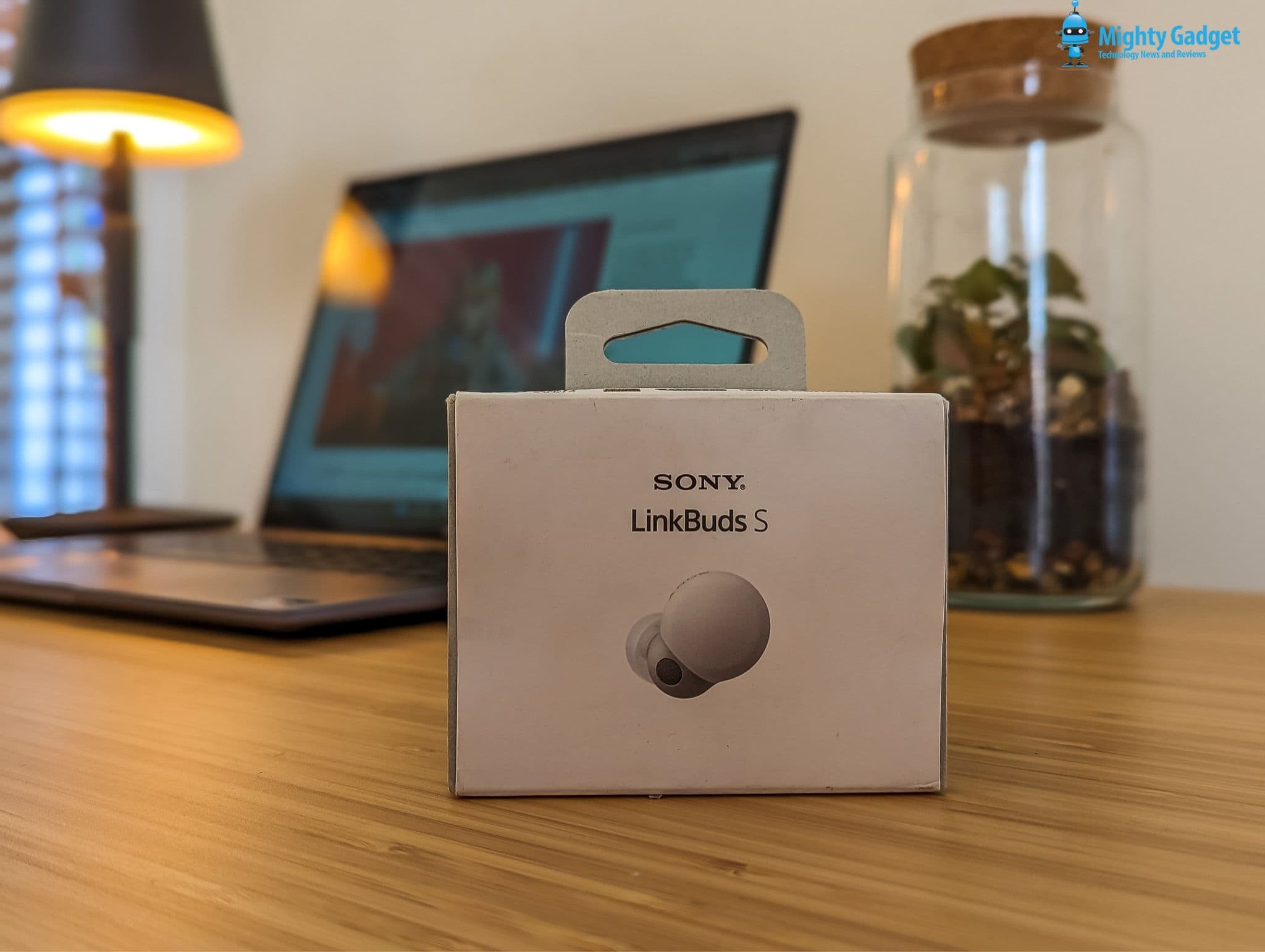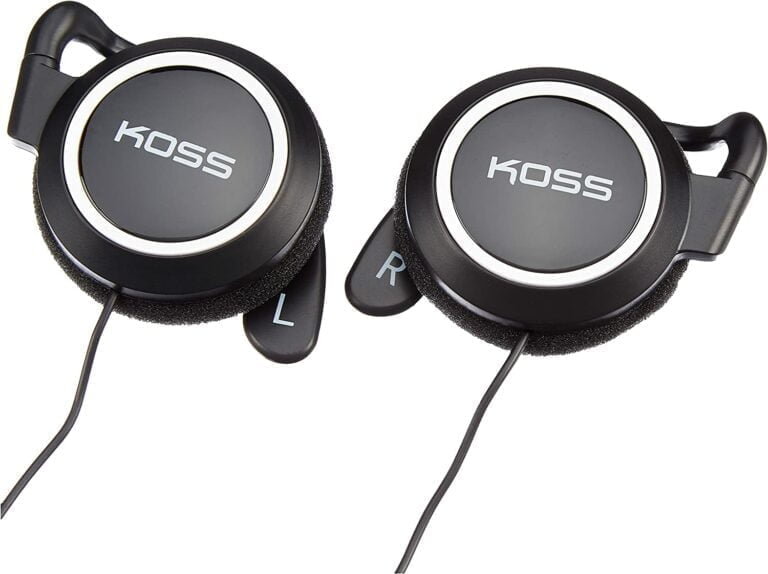Any links to online stores should be assumed to be affiliates. The company or PR agency provides all or most review samples. They have no control over my content, and I provide my honest opinion.
The Sony LinkBuds S are the first earbuds I have had a chance to review from Sony. They were announced in May 2022. Even though these share the same name as the original LinkBuds, they are not alike.
The original LinkBuds had that weird open-ring concept that allows you to have conversations and be environmentally aware. The problem with open earbuds is that the lack of a seal means the drivers are unable to provide an impressive level of bass.
The Sony LinkBuds S have a more traditional design with silicon eartips and they are closer in relation to the flagship Sony WF-1000XM4 noise-cancelling earbuds.
| Preview | Product | Rating | Price | |
|---|---|---|---|---|

| Sony LinkBuds S Truly Wireless Noise Cancelling Headphones -... |
£139.00 | Buy on Amazon |
Specification
- Driver: Dynamic 5mm
- Magnet: High power neodymium magnets
- Frequency Response: 20Hz-20,000Hz (44.1kHz sampling) / 20Hz-40,000Hz (LDAC 96kHz sampling 990kbps)
- DSEE Extreme: Yes
- Bluetooth: 5.2
- Codecs: SBC, AAC, LDAC, LC3
- Noise Cancelling: Yes
- Battery: 6 hrs (NC On) / Max. 9 hrs (NC Off)
- IP Rating: IPX4
- Earbud Weight: 4.8 g x 2
Design and Fit
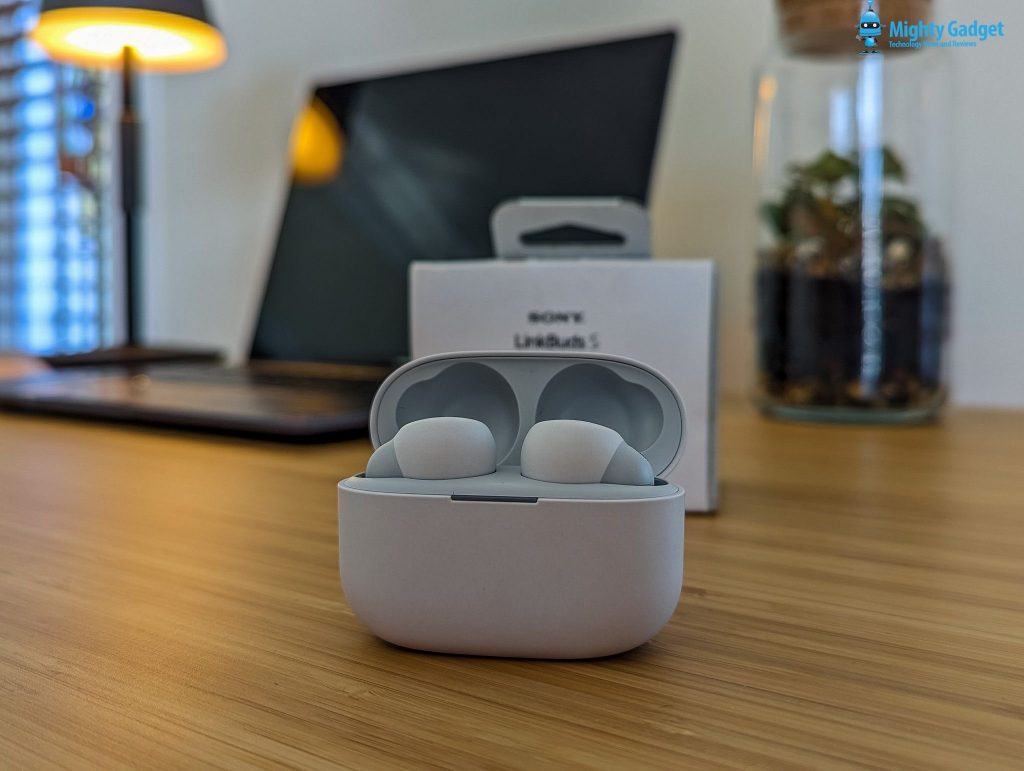
The design of the Sony LinkBuds S is not all that different from the Sony WF-1000XM4. They both have all the components contained in the earpiece, which sits inside your concha. The Sony LinkBuds S are a bit more understated and lack the metallic highlights of the Sony WF-1000XM4.
I’m indifferent to how earbuds look, I just want them to fit and sound good. As far as looks go, they are attractive enough.
While there isn’t much variation between how most earbuds are shaped, I’d say these are a little different than competing brands.

The earbud is quite small and comparatively thin compared to other brands (I compared it against the Jabra 85T and Sennheiser CX). The part of the bud where the silicon tip attaches seems to extend out further than other earbuds. For me, this means that the earbud sits very snugly in my ear, and should you choose, it feels like you can insert the earbud deeper than competing models.
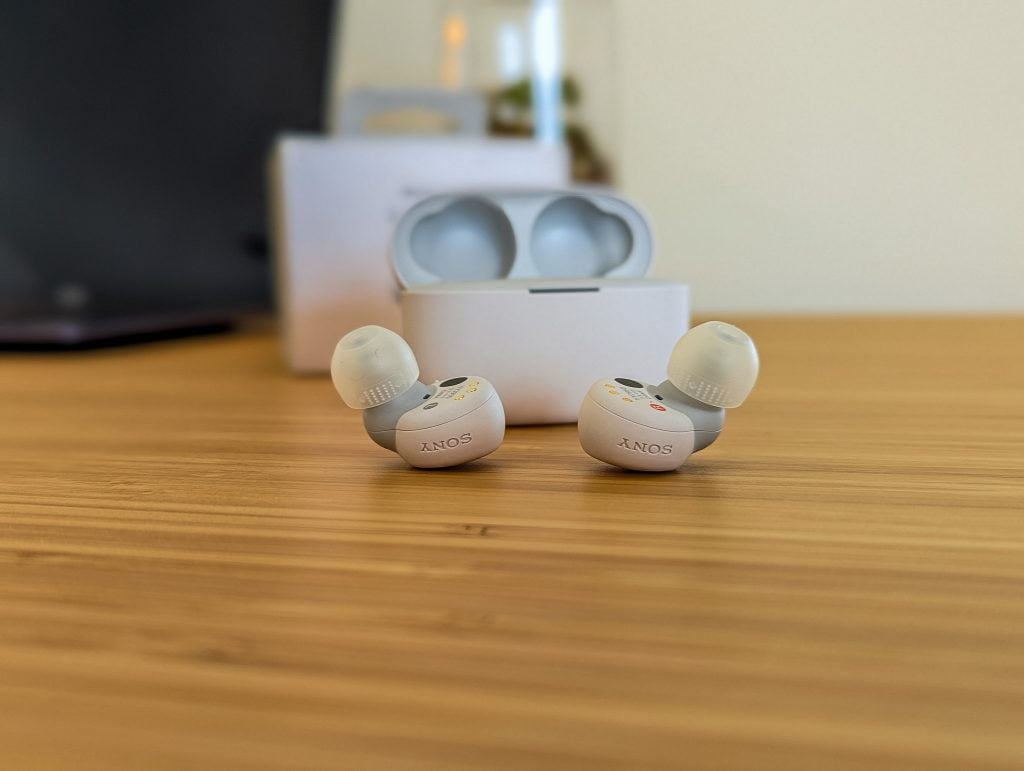
This, therefore, creates a perfectly tight seal and a very secure fit. I imagine some people (my partner) may find this design a little too intrusive, but I like it. They are one of the most secure-fitting earbuds I have used.
I have elephant-sized ears, but I imagine these will work reasonably well for people with smaller ears.
You get an IPX4 rating, which matches the WF-1000XM4. It is not the best rating out there, but it is the most common, Airpods and the Anker Soundcore Liberty 4 are IPX4, and Huawei has IP54 on their earbuds which is essentially the same. However, brands like Jabra have IP55, and IP57-rated earbuds.
I have never had any true wireless earbuds die due to water ingress, including none IP rated models. I have used these for running and the gym and had no problems. The secure fit is perfect for fitness.
App & Features
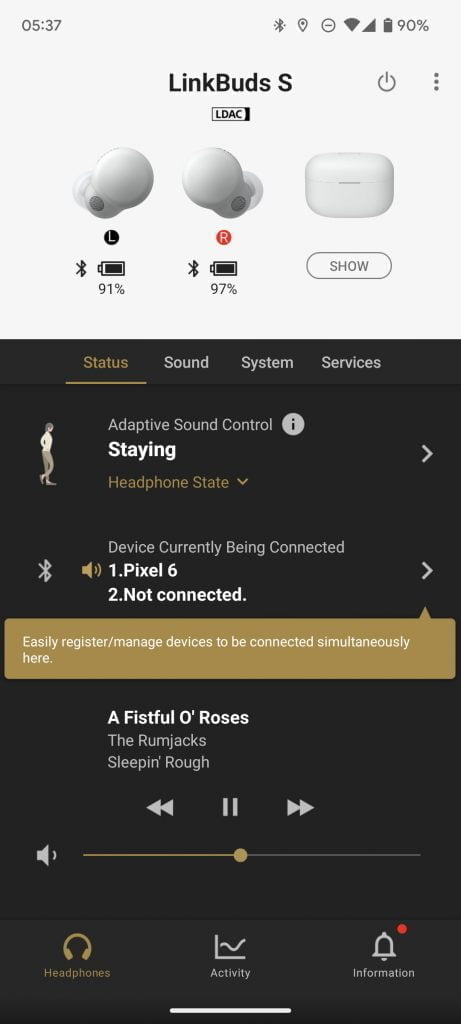
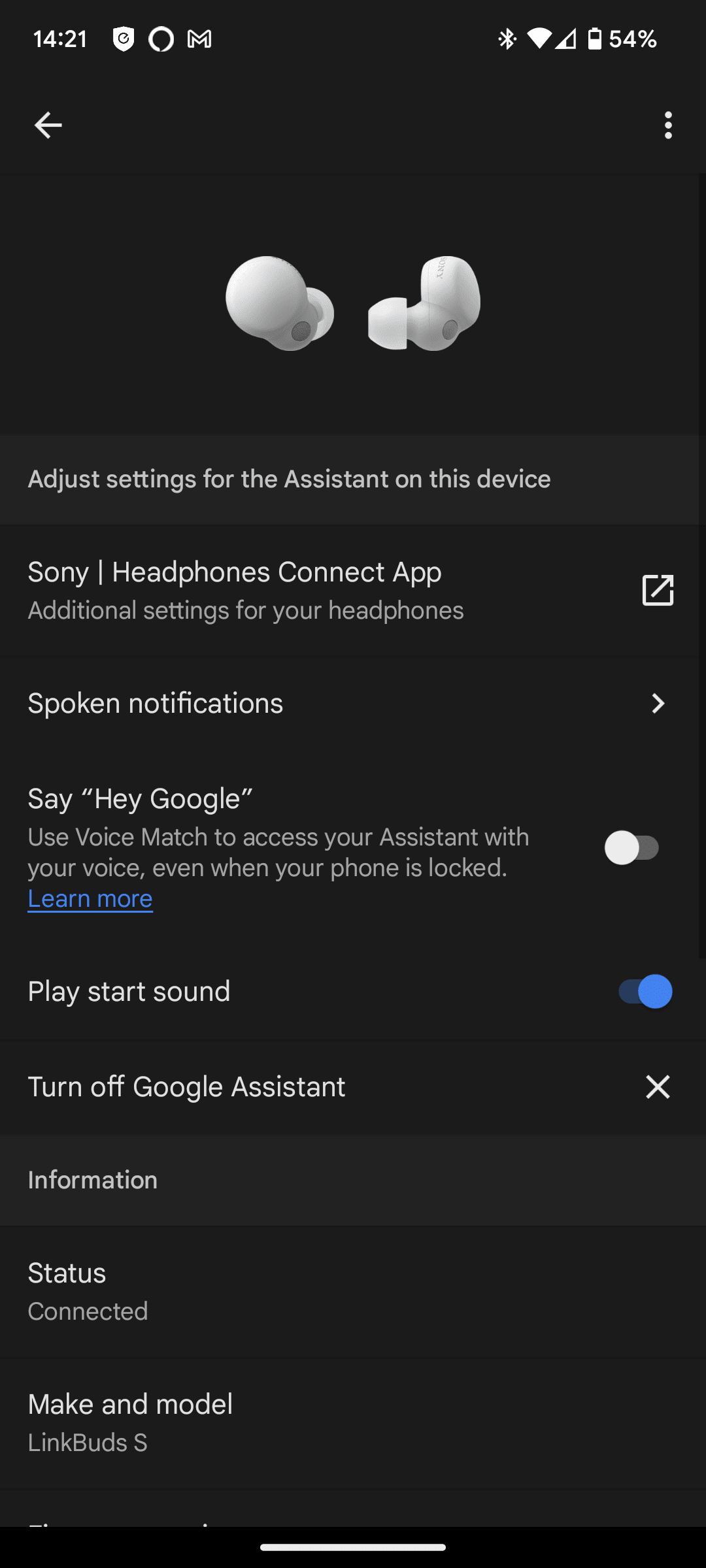
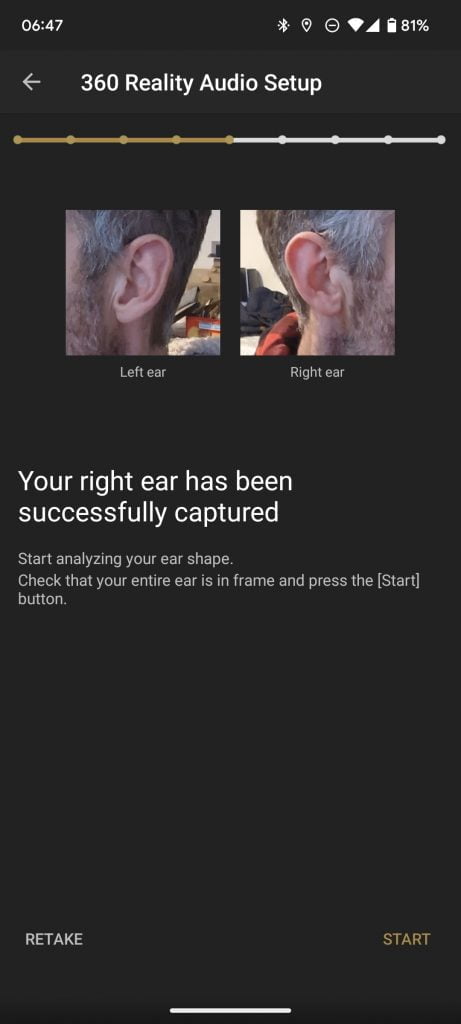

I review a lot of excellent earbuds from Chinese brands. The performance is often fantastic for the price you pay, and many of them have superb ANC nowadays, but the overall features and app quality tend to be lacking. Many don’t even have apps.
Anker is probably the best, with a good app, excellent EQ, noise cancelling and spatial sound. However, they don’t really compete with Sony, in my opinion (the EQ is better, though).
The Sony app looks professional, but I find it unintuitive. However, you have loads of features, including:
- Adaptive Sound Control –switches settings depending on what you do.
- Multi-Device / Multipoint Connectivity – A common feature thanks to BT 5.2, but the device management is good within the app.
- Ambient Sound Control: With noise cancelling, ambient sound or off options.
- Activity – I don’t really see the point in this, but you can monitor how much you use the earbuds, and they have even gamified it with badges.
- Speak to Chat – As the name suggests, with this enabled, when you speak, music/audio gets paused.
- EQ – The EQ options are good, with plenty of presets and a manual option, but it is not as extensive as Anker.
- 360 Reality Audio: This is the equivalent of spatial sound, and Sony is probably at the forefront of this technology (with Apple). This requires ear mapping, similar to Creative and is only compatible with certain apps that support spatial/360 audio.
- DSEE Extreme: Digital Sound Enhancement Engine is an upscaling technology designed to enhance the quality of compressed low-quality audio files. DSEE Extreme uses AI to accurately reproduce the original sound quality before the file is compressed.
- Google Fast Pair: This is a feature you don’t see on many Chinese earbuds. It allows you to quickly pair the earbuds and gives you location tracking with Google’s Find My Device app. The Bluetooth settings within Android also contain a lot more options.
- Voice Assistants: There are compatible with both Alexa and Google Assistant.
- Swift Pair: This is similar to fast pair but for Windows 11 and 10.
Codecs
These earbuds have the usual SBC and AAC codecs, but you also have LDAC and LC3.
LC3 was unveiled at CES 2020 being part of Bluetooth LE Audio and is poised to replace the SBC standard as the default codec for Bluetooth devices with A2DP.
LC3 is an adaptive codec similar to SBC, aptX Adaptive and LDAC. It scales from 345kbps right down to 160kbps making it the most efficient Bluetooth codec. LC3 should sound much better than SBC, even when running at lower bit rates. LC3 also supports multiple synchronous connections.
For my testing, I mainly had the app favour audio quality rather than a stable connection, and therefore used LDAC.
Sound Quality
At first, I had mixed feelings about the sound quality. Looking at the app, they had been sent to the bright sound profile, and you could tell. It said the clear bass was -1, but it was there was significant uplight with the treble, which isn’t to my taste. I’m quite sensitive to highs, so when something is bright, it tends to be quite harsh on my ears.
Initially, I switched to Excited, which adds a significant amount of bass and provides a sound profile that’s quite similar to many bass-heavy Anker earbuds. It is enjoyable for certain genres or when doing fitness, but in some tracks, the bass can be a bit overwhelming.
The default sound profile is more balanced, it is not flat, but there is much less bass emphasis than many affordable earbuds have nowadays. Lows are solid and tight without muddying the mids and highs. The highs are somewhat recessed, which is OK by me, but you can miss out on some detail.
While it is not my personal choice, the treble boost is a good option for people wanting an accurate sound that is enjoyable.
Page 2 for 360 Audio, Noise Cancellation, Battery, Price & Alternatives, and Conclusion
Originally posted on mightygadget.com – Follow on Twitter – Instagram – Facebook – Mighty Gadget Latest Reviews
I am James, a UK-based tech enthusiast and the Editor and Owner of Mighty Gadget, which I’ve proudly run since 2007. Passionate about all things technology, my expertise spans from computers and networking to mobile, wearables, and smart home devices.
As a fitness fanatic who loves running and cycling, I also have a keen interest in fitness-related technology, and I take every opportunity to cover this niche on my blog. My diverse interests allow me to bring a unique perspective to tech blogging, merging lifestyle, fitness, and the latest tech trends.
In my academic pursuits, I earned a BSc in Information Systems Design from UCLAN, before advancing my learning with a Master’s Degree in Computing. This advanced study also included Cisco CCNA accreditation, further demonstrating my commitment to understanding and staying ahead of the technology curve.
I’m proud to share that Vuelio has consistently ranked Mighty Gadget as one of the top technology blogs in the UK. With my dedication to technology and drive to share my insights, I aim to continue providing my readers with engaging and informative content.
Last update on 2024-04-18 / Affiliate links / Images from Amazon Product Advertising API

